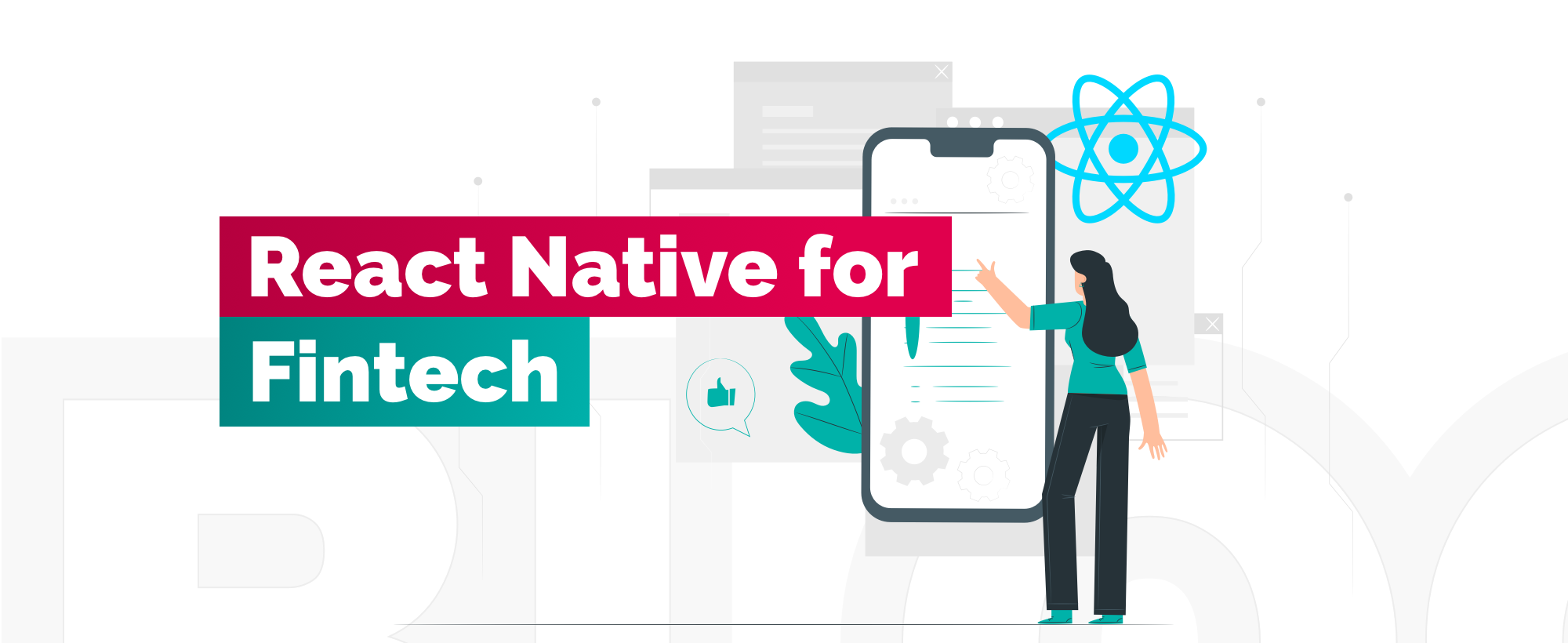Building a Fintech App With React Native: Benefits and Challenges

Team Lead & Senior Front-End Engineer at TechMagic. Member of Solution Architecture Group. Passionate about JavaScript and AWS.

Explore the pros and cons of Fintech App Development with React Native. How does React Native accelerate the building of financial applications?
Mobile devices more and more help us to interact with different areas of life. The financial area is not an exception. Mobile devices are used for bank transfers, insurance, stock market trading, managing their financial wealth, etc. Fintech apps make life easier by offering to manage all related tasks to the finance area. This means that the most important features of a Fintech app are real-time processing, velocity, security, integration with other applications, and ease of use.
What is React Native
React Native (further, read as “RN”) is a framework for building native apps using React. It means you can use the main benefits of React.js app development, including faster go-to-market time, backed by big names like Facebook, Instagram, and millions of developers globally, ease of use, quick work, efficient developer tools, etc. Comprising these advantages with RN for mobile development and as a result of synergy is a technology that is hard to compare with something similar on the market.
What is on the market? If we are talking about cross-platform development, React Native is a clear leader. The alternative is building native, platform-specific applications with Objective-C/Swift for iOS or Java/Kotlin for Android. Native app development is more expensive and complex than cross-platform and becomes feasible when you need access to the device’s features such as camera, GPS, calendar, etc. If not, cross-platform development would be the most reasonable strategy.
Evidently, there might be some drawbacks of using RN, which would be mentioned later, but they are minor compared to the advantages that promise to be. All higher mentioned bring us to a conclusion that answers the question:
Why should you consider building a fintech app with React Native?
Advantages of React Native for Finance App Development
Big players like Facebook, Airbnb, and Instagram have embraced this technology for their application development process. React Native remains one of the most prominent frameworks, attracting more and more businesses and developers. But what makes React Native so appealing to the tech community?
One Code for IOS and Android
Mobile development with React Native gives access to the vast majority of the target audience since IOS and Android platforms take up to 99% of the mobile app market. Correctly written code can be shared from 90% to 99% between both platforms.
Ready-made components
Instead of writing code from scratch, you can speed up development time by using ready-made components that fintech app development with React Native offers.
One Team — Two Platforms
Native apps require two separate developing teams for Android and iOS. As a result, two projects can become inconsistent. Meanwhile, React Native for a finance app makes it possible to manage one team for developing an app on both platforms.
Experienced React Native Developers
Building applications with React Native gives you access to a large pool of talents. The community of React Native developers is quite big already and continues to grow.
Possibility of Relocation
You can easily relocate your web developers into the React Native environment if the necessity arises. They will already know how to build a fintech app using React Native since it’s basically just JS with a bunch of components and API out of the box.
Availability of Hot Reloading
App development with React Native offers a progressive feature called Hot Reloading. It makes it possible to implement new versions and modify the UI without leaving the running application.
Productivity
React Native in the financial app allows you to build native-live applications that perform on the same level as native-built solutions and offer highly smooth animations.
Optimal User Experience
Using RN provides an optimal User Experience across both platforms.
Challenges and Drawbacks of Building a Fintech App With React Native
Despite the plethora of benefits that React Native delivers, there are certain situations and projects where this framework would not be the best choice. Nothing is perfect, so what are the main cons of React Native?
RN lacks some components
There is a chance that there won’t be a problem with that, as the majority of custom modules are available, well-documented, and working properly. However, amid the increasing complexity of the application, switching to a native technology might be more beneficial.
Performance
Using React Native in the banking app with a high grade of computational intensity and advanced functionality might lead to lower performance than apps created with native language.
Custom Solutions
React Native in financial application development is a relatively new solution that often makes it subject to changes and improvements. As a result, developers are forced to come up with custom solutions or workarounds.
Creating a Fintech App With React Native at TechMagic
React.js development company changes rules the way mobile development is done today. Decisions made on what technology should be used for accomplishing the goal depending on different aspects accounted for achieving the desired result. With RN technology and the revolutionizing approach it offers for mobile development, the developed product will be highly competitive and flexible, which is one of the main elements of success.
More and more financial companies choose this framework and build their cross-platform solutions. Applications like Coinbase — a tool for advanced crypto traders, Emma — Personal financial management tool, Oval — an app for financial coaching and planning, were all built using React Native.
The duration of an app development cycle varies depending on the complexity of the project and the type of application. For example, building a banking app with React Native reduces time to market and ensures that your application reaches its users faster. The cost may also be different from application to application, so we advise you to read more about it here.
We at TechMagic know how to create a fintech app using React Native in the shortest time. We are ready to share our knowledge and experience and help you build the best product. If your decision stops on the React Native framework for your future Fintech app, don’t hesitate to contact the TechMagic team. We will help you in your future endeavors and will become part of your history of success.
Learn more about our expertise and fintech app development services with React Native.
Conclusion
Considering that the fintech area is very competitive with high velocity, there are strong reasons to consider React Native as an optimal option for developing a product because this technology:
- accelerates the speed of developing a consistent app on iOS, Android platforms,
- cost-related expenses with creating an app can be reduced by 30-40% compared to the cost for developing the same product by two teams,
- there will be a smaller team, and it will be easier to manage,
- gives users native experience.
These reasons are persuasive for considering React Native as a desirable technology for the fintech app because its benefits can be one of the cornerstones on which stands success of the delivered product in this very competitive area.
Interested to learn more about TechMagic?
Contact us


 Software Development
Software Development
 Security Services
Security Services
 Cloud Services
Cloud Services
 Other Services
Other Services
















 TechMagic Academy
TechMagic Academy
 linkedin
linkedin
 facebook
facebook
 twitter
twitter






















